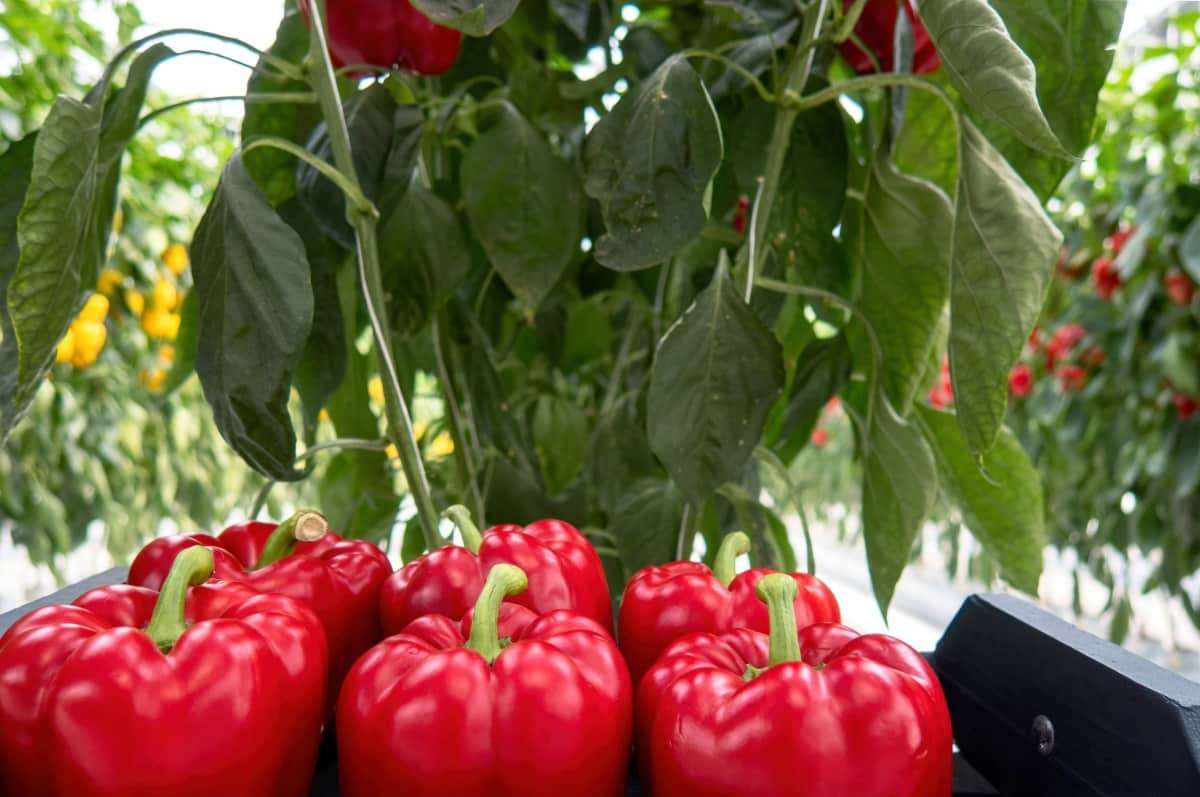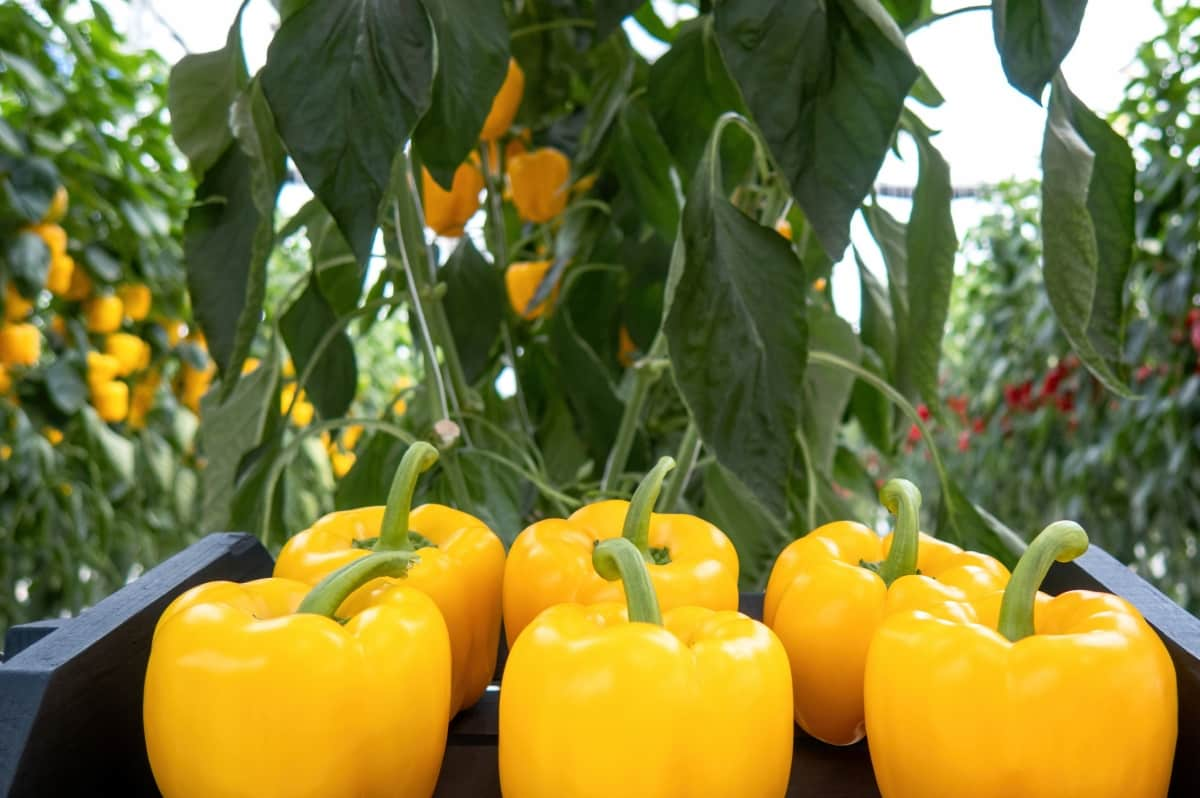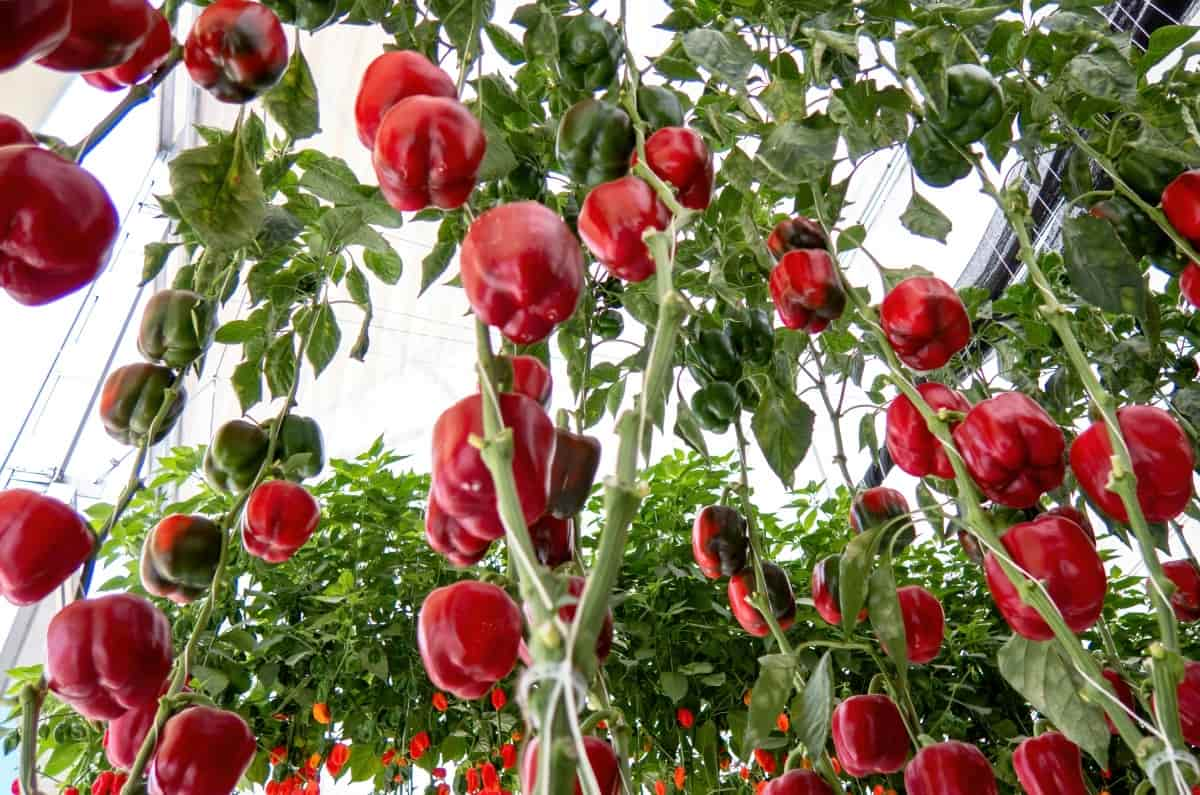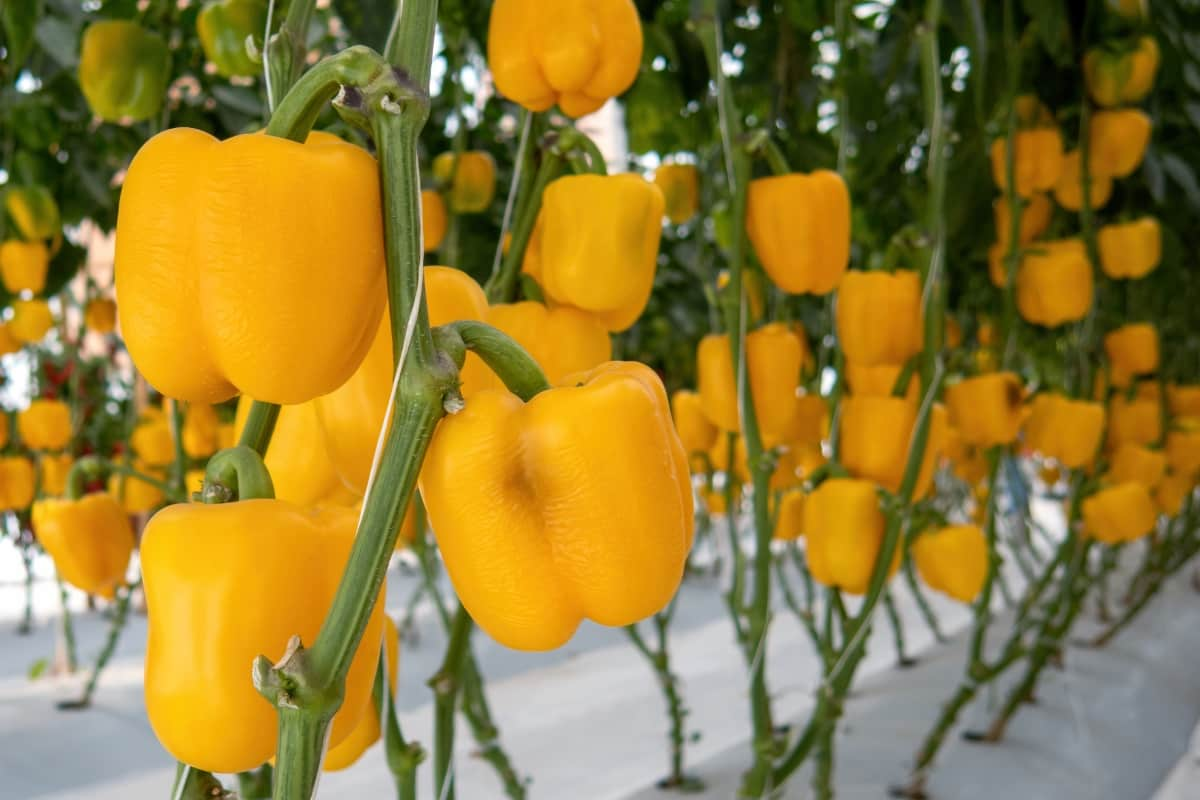Embarking on a 1-acre greenhouse-colored capsicum project is a venture laden with potential for farmers seeking both agricultural innovation and financial prosperity. This cultivation endeavor thrives within the controlled environment of a polyhouse, where factors like temperature, humidity, and light are meticulously regulated.

To truly grasp the intricacies of success, one must delve into the fundamentals, ranging from the selection of an apt greenhouse and the optimization of environmental conditions to the careful choice of colored capsicum varieties and the implementation of effective irrigation and fertilization methods. In greenhouse farming, where precision and strategic planning are paramount, understanding these basics lays the foundation for a thriving venture.
1-Acre Greenhouse Colored Capsicum Project Report
Understand the Basics of Greenhouse Colored Capsicum Cultivation
In agriculture, the 1-acre greenhouse colored capsicum project stands out as a promising venture, attracting many farmers seeking profitable cultivation. Capsicum cultivation in a polyhouse offers a controlled environment that enhances the overall yield and quality of the produce.
Understanding the basics of this endeavor is crucial for success. Capsicum yield per acre in a polyhouse is a pivotal metric, determining the project’s profitability. Efficient capsicum cultivation involves optimizing environmental conditions, selecting the right greenhouse, and employing proper irrigation and fertilization techniques.
Choose the Right Greenhouse for Colored Capsicum Cultivation
The choice of a greenhouse is a critical decision in the success of a colored capsicum project. The selected greenhouse must meet specific criteria to create an optimal environment for capsicum cultivation. The project’s success is influenced significantly by factors like its size, design, and material choices. The greenhouse’s capacity to regulate temperature, humidity, and light is vital for ensuring the well-being and productivity of capsicum plants. Investing time in researching and selecting the right greenhouse is an essential step toward a thriving venture.
Optimize Environmental Conditions for Greenhouse Colored Capsicum Cultivation
Establishing a setting that replicates the native conditions of colored capsicum plants is crucial for the success of a greenhouse endeavor. Temperature, humidity, and light levels must be carefully controlled to encourage healthy growth and high yields. Monitoring and adjusting these factors in real time are crucial aspects of greenhouse management. Achieving the optimal balance will not only contribute to a higher capsicum yield per acre but also enhance the overall quality and appearance of the produce, increasing its market value.
Select the Best Varieties of Colored Capsicum for Greenhouse Cultivation
Variety selection is a key determinant of the project’s success and profitability. Different colored capsicum varieties have distinct characteristics, including taste, size, and color. Understanding market demand and consumer preferences is essential in choosing the right varieties for cultivation. The goal is to offer a diverse and appealing range of colored capsicums that cater to various culinary needs. This strategic selection not only maximizes profits but also positions the project favorably in the market.
In case you missed it: 1-Acre Blackcurrant Farming Project Report: Economics for Profit and Cost

Irrigation and Fertilizers in Greenhouse Colored Capsicum Cultivation
Effective irrigation and fertilization strategies are paramount in achieving a successful colored capsicum harvest. The controlled environment of a greenhouse requires precise management of water and nutrient levels. Drip irrigation systems prove beneficial in delivering water directly to the plant’s roots, minimizing waste, and optimizing resource use.
Similarly, a well-balanced and tailored fertilization plan ensures that capsicum plants receive the necessary nutrients for robust growth. Properly managing irrigation and fertilization contributes significantly to capsicum cultivation profit per acre, making it a key aspect of the overall project economics.
Harvesting and Post-Harvesting of Colored Capsicum in Greenhouse Cultivation
Efficient harvesting and post-harvesting practices are pivotal stages in a greenhouse-colored capsicum project, directly influencing the overall quality of the produce and subsequent market value. Harvesting must be conducted at the right phase of ripeness, ensuring that the capsicums have developed their optimal color, size, and flavor.
Careful handling during harvesting is essential to prevent damage and preserve the marketable appearance of the fruits. The activities conducted after harvesting, including sorting, grading, and packaging, are essential for preserving the freshness and visual appeal of the colored capsicums. Implementing proper storage conditions further extends the shelf life, ensuring a consistent and high-quality supply for the market.
Marketing Strategies for Greenhouse Colored Capsicum Produce
Developing effective marketing strategies is imperative for successfully positioning greenhouse-colored capsicum produce in the market. Understanding consumer preferences and market trends allows farmers to tailor their approach to meet demand. Utilizing various channels, such as local markets, grocery stores, and even online platforms, expands the reach of the produce.
In case you missed it: 1-Acre Durian Farming Project Report: Economics for Profit and Cost

Emphasizing the freshness, quality, and vibrant colors of the capsicums in marketing materials enhances consumer appeal. Collaborating with local businesses, restaurants, and chefs can create additional avenues for sales. Implementing a comprehensive marketing plan not only boosts sales but also establishes the greenhouse project as a reliable source of premium colored capsicums in the market.
Economic Analysis and Financial Planning for Greenhouse Colored Capsicum
Assumption of Having Your Land: Foundational assumption influencing overall project cost.
Greenhouse Construction
- Materials, labor, and infrastructure expenses.
- Costs range from INR 15 lakhs to INR 30 lakhs for a 1-acre greenhouse.
- Up to 80% subsidy is available from the horticulture department.
Seeds
- High-quality colored capsicum seeds are pivotal.
- Cost per acre: INR 50,000.
Labor
- Skilled labor for planting, maintenance, and harvesting.
- Average cost: INR 2 Lakhs per year.
Fertilizers and Pesticides
- Crucial for healthy crop development.
- Annual expenses: INR 2 lakhs.
Irrigation
- Efficient systems like drip irrigation or sprinklers are needed.
- Setup and maintenance cost: INR 1 lakh.
Utilities
- Electricity, water supply, and other operational costs.
- Approximately INR 1 lakh per annum.
Miscellaneous Expenses
- Contingency funds, administrative expenses, and miscellaneous items.
- Total around INR 1 lakh per annum.
Profits Calculation
- Potential profits depend on market demand and selling price.
- Assuming an average yield of 15 tons per acre and market prices from INR 60 to INR 100 per kg, potential revenue is estimated.
- Average selling price: INR 80 per kg.
- Yield: 15 tons per acre.
- Total Revenue: 15,000 kg * INR 80/kg = INR 12,00,000.
Net Profit Calculation
- Subtract total costs from total revenue.
- Total Costs: Seeds + Labor + Fertilizers and Pesticides + Irrigation + Utilities + Misc. Expenses = INR 7,50,000.
- Net Profit = Total Revenue – Total Costs.
- 1-Acre Greenhouse Colored Capsicum Net Profit = INR 12,00,000 – INR 7,50,000 = INR 3,50,000.
Note
- Assumption of land ownership and exclusion of greenhouse construction costs significantly impact net profit.
- Farmers should assess these factors for accurate financial planning and project viability.
In case you missed it: 1-Acre Langsat Farming Project Report: Economics for Profit and Cost

Conclusion
In the pursuit of cultivating colored capsicum within a greenhouse environment, a holistic approach is imperative. Beyond the meticulous tending of plants, harvesting, and post-harvesting practices, the financial landscape must be carefully navigated. A detailed economic analysis, considering costs and profits, sheds light on the intricate balance between investment and returns. From the initial outlay for greenhouse construction to ongoing expenses like labor and utilities, each aspect contributes to the project’s economic viability.
- Feed Your Flock for Less: Top 10 Tips to Save on Chicken Feed
- Ultimate Guide to Ossabaw Island Hog: Breeding, Raising, Diet, and Care
- Hatching Answers: The Top 10 Reasons Your Chickens Aren’t Laying Eggs
- Eggs and Economics: Breaking Down the Cost of Raising Backyard Chickens
- Defend Your Greens: Proven Methods to Keep Iguanas Out of Your Garden
- Ultimate Guide to Cinnamon Queen Chicken: A Comprehensive Guide for Beginners
- Ultimate Guide to California Tan Chicken: Breeding, Raising, Diet, Egg-Production and Care
- Ultimate Guide to Marsh Daisy Chicken: Breeding, Raising, Diet, and Care
- 10 Types of Chicken Farming Businesses You Can Start for Profits